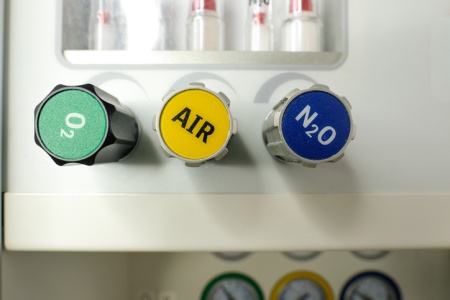By Mike Lorence, PH.D.
You’re about to digest a very meaty article with a ton of actionable strategies regarding the hiring of superstar sales reps, but this information is not for the faint of heart. Let’s start by asking these questions:
Are you motivated to hire superstar
salespeople in your gas business?
Are you the main ‘rainmaker’
for your business?
Have you hired salespeople in the past that turned out to be duds?
Do you want to extract yourself from the day-to-day selling activities in your business?
If your answer is yes, read on … but first, let me introduce myself. I’m Dr. Mike Lorence. I’m regarded as the nation’s foremost expert on building and growing a high-performing sales force from scratch. I published the most widely read doctoral dissertation on this topic, and that research has been used in 27 countries. I speak about it some 40 times a year to a range of business groups. I’m not an “HR Guy” or a consultant. Like you, I’m a practitioner and business owner.
I also understand that none of that is important to you unless I can teach you something to drive bottom-line profitability in your business. That’s my goal here. My methodologies were learned in the trenches, and I use them in my own portfolio companies. I estimate conservatively that I’ve invested well over $3 million in a learning curve creating them, so I can say that they work. But, they’ll only work if you actually implement them.
Bitten By The Bug of Mediocrity
Chances are that if you’ve ever hired any salespeople in your business, you’ve been bitten by the bug of mediocrity. Many business owners have tried to hire salespeople and have failed; some have failed miserably. Some entrepreneurs are so scared from such an experience they never hire another salesperson again. Resolute in their “no one can sell like I can” mentality, some owners dump hundreds of thousands of dollars in cash right down the toilet with this kind of stinky thinking. My strategies are designed to inoculate you from such a fate.
First, you need to know just how bad the current state of the art is regarding the hiring of sales reps. (And yep, it’s bad). First is this statistic: 18 percent. That’s the average success rate for hiring successful salespeople. So for every 100 salespeople hired in a small business, only 18 percent of them actually meet quota in their first year on the job … and the other 82 percent fail. That’s miserable.
The Inconvenient Truth of 7X
Then there’s the inconvenient truth of 7X. I say that 7X is the average cost of mis-hiring a salesperson. It means that if you hire a dud salesperson, you’re actually suffering a financial impact of seven times the first-year quota of that dud.
If you hire a new salesperson whose first-year quota (i.e. the amount of revenue he must sell) is $150,000, but he doesn’t meet that quota, you’ve just blown seven times that amount — $1,050,000. That includes lost opportunity cost, training a replacement, lost productivity, leads that go cold, leads he should have already converted and a host of other ill effects.
So how the heck do you hire the best? How do you land a 23-year-old Zig Ziglar? Is it art or science? Is there a secret formula?
Art Or Science?
The research is pretty clear: It’s science, and a lot of it. I’ve distilled that information into my own process for hiring superstar sales reps. Here it is:
Document the Super Star Game Plan
Turn On Direct Response Recruiting
Reject the Candidate (do it with a straight face)
Make Candidate Jump Through (Many) Hoops
Pick the Superstar and Onboard
Before the First Applicant Even Applies
As a 20-year-old second lieutenant in the Marine Corps, I was introduced to the Principle of Bloody Preparation. My company commander believed that it’s far easier, cheaper and less painful to sweat in peace than it is to bleed in war. In fact, the more blood, sweat and tears we shed in peace, the more we make our enemies shed their blood in war, he taught.
At the time, I thought he was a wacko. He had us working 5 a.m. to 11 p.m., six days a week and running in full “boots and utes,” and not on roads, but underground in the sewer drains. He was meticulous in his preparation — even brutal in his approach — and he illustrated a great lesson about hiring salespeople. It’s that the majority of heavy lifting is done well before you even conduct the first interview. You’ve got to put together a Super Star Game Plan that will include a compensation plan and what I call the One-Page Job Scoreboard.
The Secret Sauce
How do you attract the right person who will actually perform at a high level? You need a great compensation plan as the backbone of your Super Star Game Plan. But I find that most small -business owners suffer from a crippling disease that prevents them from installing an effective compensation plan in their business: BMBID. It stands for: “But, My Business Is Different.”
My goal is to get you over your bias about that, because no, your business is not different.
Here is the secret sauce for compensation plans that drive results (I call it “Dr. Lorence’s 5 Commandments of Compensation Plans”):
Thou shalt have a very sexy comp plan
Thou shalt pay based upon results
Thou shalt use the right pay drivers
Thou shalt pay based upon activities
Thou shalt use your comp plan in your recruiting
Your comp plan must scream “big opportunity” with high earning potential. That’s sexy. Your recruiting ad must reach out to that prospective salesperson, grab them by the throat and compel them to read your ad. Better yet, it should make sales candidates salivate (not yawn). (There’s a sexy recruiting ad later in this article.)
Paying on Wrong Results
I find that most business owners pay salespeople on the wrong results. The most common comp plan pays on percent of revenue or gross margin. (For example, Sally Salesperson sells a $5,000 widget. She gets paid 25 percent of gross margin — $1,500 x 25 percent = $375.) That’s OK; you can do that, but it’s only half of the story.
You need to keep Sally on track and focused day-to-day so she actually meets quota. That’s why you could set her comp plan to also pay her a fixed bonus for every meeting conducted with a decision maker. That’s an important leading indicator for revenue. Or, pay her based upon outbound call volume (called activity-based pay). Activity-based pay helps align the day-to-day activities of the salesperson with revenue production. That helps monetize the sales rep’s talent in the most efficient way.
Using the right pay drivers keeps the salesperson motivated in both the short and long term. And the shorter your sales cycle, the more incentive comp (i.e. commission) and the less base salary your sales rep should get paid. Assuming you’ve got decent predictable lead flow, if your sales cycle is fewer than 30 days, I’m in favor of 50 percent commission, 50 percent base salary as a general rule. If your sales cycles are more than six months, your salesperson may starve at 50 percent commission/50 percent base. You’d need to ratchet down the commission and increase the base. Alternatively, you could pay a lot more incentive comp for activities (which I prefer).
Be sure to use your compensation plan in your recruiting process — after the candidate has jumped through a few hoops in your hiring process (more about hoops in the next article).
Ultimate Weapon: Scorekeeping
Once the comp plan is set, you need to clearly define expectations. My One-Page Job Scoreboard shows, with great specificity, the results we expect. It essentially brings the compensation plan to life by showing how we keep score every day.
This tool is exceptionally effective for the small-business owner because it removes all the bellyaching over performance reviews with salespeople (and everyone hates those). Its elegance lies in its power to change behavior. The sales rep conducts his/her own performance review using the One-Page Job Scoreboard. A rep actually comes into the performance review meeting (I recommend them to be done monthly, minimally quarterly) with the One-Page Job Scoreboard already filled out. You, the business owner (or your sales manager), do no prep for that meeting; all the onus is on the salesperson.
The Scoreboard Explained
This scoreboard breaks down the quantitative metrics that define success. It has three parts: financial metrics, activity metrics and recruiting metrics. This table shows examples.
By the way, that $2,500 recruiting bonus is way too low, but I typically get gasps from people when I suggest they do this. I pay a $10,000 bonus to my salespeople for every person they refer us. It’s a no-brainer, cashflow-positive investment — because I don’t pay the bonus unless the referred, newly hired salesperson meets their first-year, One-Page Job Scoreboard metrics. And if a sales rep does that, he or she is worth well more than $100,000 to me. Plus, the referral bonus turns my staff into full-time headhunters for me, and it lowers talent acquisition costs. The research is very clear: superstars attract superstars; duds attract duds.
Metrics Breakdown
Financial metrics are generally revenue production metrics; examples are revenue sold, gross margin dollars sold, etc. Those are lagging indicators of performance. Lagging indicators don’t tell you anything about the future health of your sales pipeline or what your revenues may be next month, or next quarter. You need leading indicators for that. Activity metrics are leading indicators. Examples include outbound call volume, appointment setting, presentations made, salespeople referred and closing rate.
The compensation plan and the One-Page Job Scoreboard comprise the Super Star Game Plan and are the foundation for building a sales team. Now, we can turn to a recruiting system. (Don’t fall into the trap of just turning on the Zip Recruiter ads, hoping and praying to get good salespeople.)
What Is Direct Response Recruiting?
I’m a student of direct response marketing, the science of getting people to respond to your advertisements and then measuring them. This measurement allows you to split-test headlines, offers and pricing. It’s the only way to scientifically prove which marketing works and which doesn’t.
Years ago, I started applying direct response principle to recruiting salespeople, because recruiting is fundamentally a scientific marketing activity. It turned out to be a major breakthrough. It requires that you have compelling “bait” to attract a superstar sales rep and that you measure the responses.
Here are some best practices for writing recruiting ads for salespeople. The ad must:
Include a compelling headline (use headline formula)
Repel the wrong candidates and attract the superstars
State the earnings potential in the first three sentences
Give a clear call to action, get a candidate to opt in (i.e., give you their name and email).
As an example, the headline of my best-performing ad says something like:
For Sales Superstars Only, Do Not Apply For This Opportunity Unless You Have What It Takes To Be A Top Producer.
Then: Warning: We don’t hire resumes. We hire results. Average salespeople earn $38,000; superstars can earn $167,000. But we’re not going to hire you unless you can prove to us you have the work ethic, drive and determination to be a top producer. Young or old, if you’ve got the stuff of greatness, we’ll know. Send an email to [email protected] or visit www.wehireonlysuperstars.com to take the first step.
Let’s deconstruct that ad for critical take-aways.
Rejection. I reject the candidate right in the ad copy to help screen out those who won’t work hard.
I want good-quality leads, not duds.
Federal compliance. The ad complies with federal EEOC regulation per age discrimination. Headhunters for salespeople hire salespeople who are young. Especially in the tech world, hiring young, technology-savvy salespeople is vogue. However, Uncle Sam wants you to give a fair shot to applicants of all ages. (I found that when I added the phrase “young or old, if you’ve got the stuff or greatness, we’ll know,” it actually increased the ad response rate. So, not only does it insulate us from an age-discrimination suit, it makes my ad perform better. Score!)
Sexy opportunity. The $167,000 number screams out to top performers. (And yes, this is a completely legitimate number. We model several different compensation scenarios and we prove to candidates what they need to do to earn that kind of money per year.) Notice that the earnings range discloses what average sales reps make AND what superstar sales reps make. My experience tells me that you must state a top-end earnings potential; still, you’re not guaranteeing they earn it. We’re completely above-board with all of this.
During the interview, the hiring manager puts the One-Page Job Scoreboard and the comp plan in writing and reviews it with the candidate, using this script:
Here’s how it works. If you engage in these activities, make this many phone calls, set this many meetings, use the scripts we’ve provided and master the objection-handling system we’ve developed, you’ll achieve roughly this level of production (point to it on the comp plan), which means you’ll actually earn more than $167,000. I’ll be straight up with you. It’s not going to be easy. If it was, everyone would earn $167,000. So, you’ll have to work hard. So, are you the type of top producer who is actually going to put the work in, or are you going to be the negative naysayer who complains every step of the way and doesn’t make quota?
Call To Action. There’s a clear call to action in the ad, and the candidate is given two ways to respond: via email or by going to a website. Providing more than one response mechanism tends to increase the response rate, which drives the cost per candidate down.
With candidates’ names and emails, we turn on an automated email sequence and drip on that candidate over time, which drives them into our recruiting funnel.
In the next issue of this magazine, I’ll cover the last two steps of this recruiting system:
Make Candidate Jump Through (Many) Hoops
Pick the Super Star and Onboard.
I look forward to the next issue and to describing how the rest of this system works.
Dr. Mike Lorence is a world thought leader in hiring and managing sales people. He’s also a professional speaker, author and general partner of Magnolia Buyout Partners, a boutique private equity firm focused on acquisitions of privately held businesses in the micro market.
You can reach him at: Path for Growth,
[email protected].










